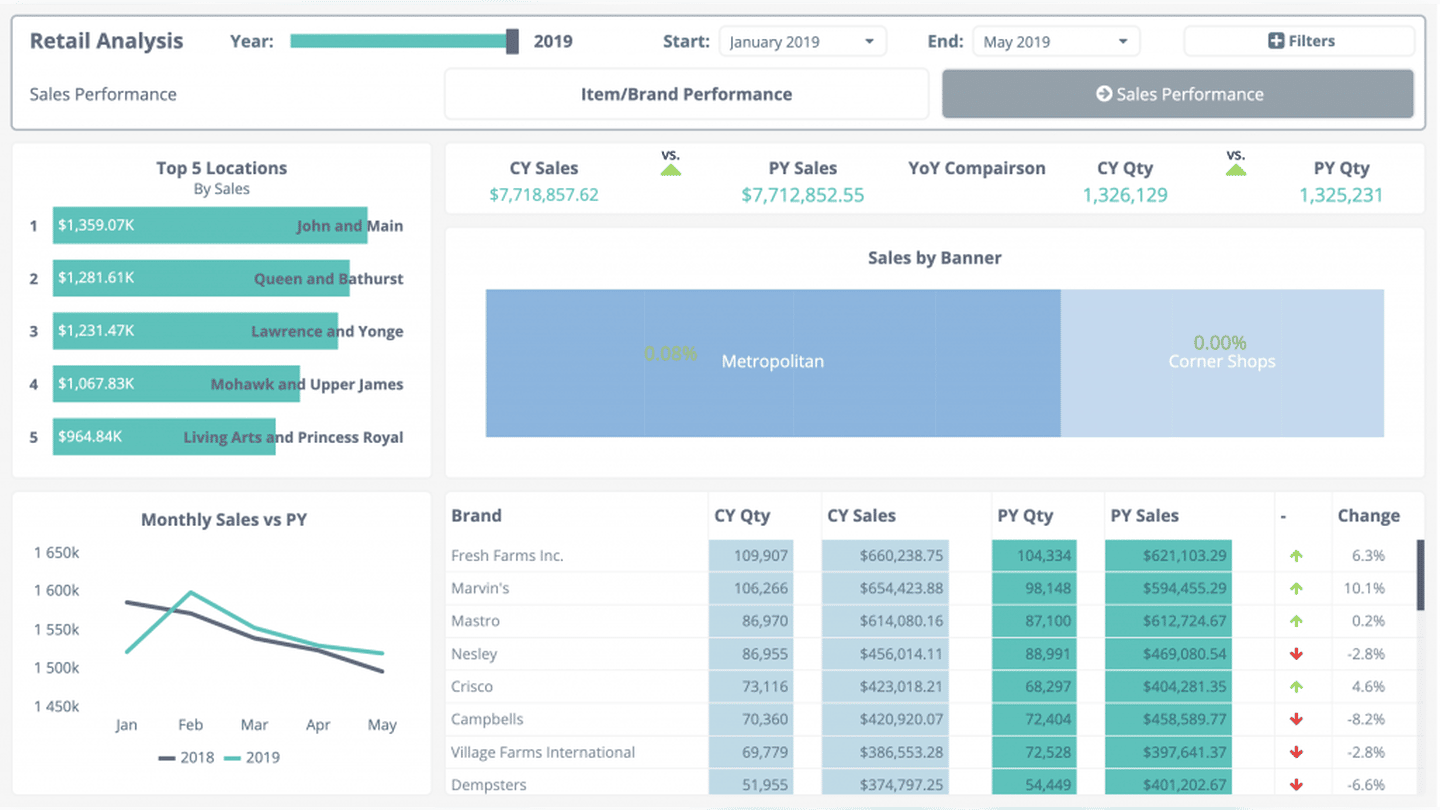Inside sales is a sales model that has been formalized by Salesforce as part of its own sales process. Sedentary sales are sales managed entirely at a distance (email and telephone). Today, this is the dominant model for the sales teams of large B2B software companies. What are the strengths of a sedentary sales organization? How to set it up? How to measure and optimize the performance of a sedentary sales team? All your questions are answered in this comprehensive guide.
Sommaire
#1 Why favour a sedentary sales organisation?
1. It is cheaper
In a sedentary sales organization there are no travel expenses or outings to meet prospects. Everything is done by phone or email which is a huge advantage in terms of expense. In addition, your sales representatives’ salaries are usually lower.
2. Everything is measurable and therefore optimizable
Sedentary teams are generally equipped with tools that allow them to better track all their communications. These measures allow us to set up efficient business processes. For example:
- The number of calls made per day,
- The rate of successful calls,
- Email open rate,
- The number of responses, etc.
Once you measure all of this, you know what drives better conversion rates at each stage of the sales tunnel. This makes it much easier to recruit and train your new salespeople.
To go further
Do not hesitate to consult our guide on the onboarding of new sales representatives where we give you tips for a successful integration of your employees.
3. It provides a better experience for your prospects
Given that 75% of customers prefer to avoid real sales contact, a sales organization with a sedentary presence can provide a better experience for your prospects. You also eliminate travel time. You are no longer a “slave” to geography, which increases your profitability.
4. This gives you a very solid organization
Coronavirus containment has forced many business organizations to adapt. A sedentary organization makes it possible to set up very precise processes, with clear roles and very precise quantified objectives for each team member. This allows us to have a much more agile organization, capable of adapting (somewhat) more easily to complicated situations such as the one we experienced in 2020.
#2 What are the different roles in a sedentary sales team?
You’ve probably heard of a few standard positions in a sales team, such as Account Executive (AE), Sales Development Rep (SDR) or Sales Engineer. Depending on the size of the company and your sales process, these roles may be defined differently.
For example, a small inside sales team may be composed solely of Account Executives who do everything, including the roles traditionally assigned to SDRs and Sales Engineers. As the team grows, roles become more defined and specialized. Let’s go through each role, starting with who you should hire first. Then we will go in order of people to hire as you grow.
Account Executives
The Account Executive has a fundamental role within a sales team. AEs must be able to do it all – lead generation, qualification, relationship building, presentation and closing the sale. They are the primary point of contact and are ultimately responsible for demonstrating the product and closing the deal. If you are a small business, your AEs will manage the entire sales cycle from start to finish.
Sales Development Reps (SDR)
B2B software companies rely on inbound marketing to generate leads, but these leads are usually not enough to keep the sales pipeline full. This is where your SDRs come in. Sales Development Reps are your outbound lead generators. They are usually responsible for sending emails and calling various prospects in order to set up a meeting. An SDR is a true expert in telephone prospecting. This role requires courage and determination to overcome rejection and find opportunities, and a “hunter’s” mindset determined to get appointments.
Account Manager / Customer Success
Closing the sale is only the beginning of maintaining a revenue stream. Once the contract is signed, your Account Manager is responsible for maintaining the sales relationship with your customers, helping them to use the product and identifying additional revenue opportunities. They learn more about the customer’s business goals and add value to help develop and retain the account.
Sales Engineer
If your product is very technical with multiple use cases, a Sales Engineer will help you bridge the technical gap for your Account Executives. Sales Engineers, at the first stage of the funnel, help answer complex product questions and determine how the product can solve the prospect’s pain points. After the sale, they can help implement the product and assist the Account Managers when the customer has technical needs.
Sales Operations
Once you have a few salespeople on your team, you’ll want to track their progress and improve your sales procedures. The Sales Operations teams are responsible for providing tools and support to your sales teams. They analyze all the metrics from all your tools and find the areas of the sales funnel that need help. Sales ops are responsible for ensuring that the entire sales process runs as efficiently as possible, and for minimizing friction both on the customer side and internally, on the process side.
#3 How to set up your sedentary sales team?
1. Integrate and develop your team ?
- Training manual: create a training manual that guides them through the sales process: product value propositions, competition, sales scripts, common questions, objections and how to answer them. Give them all this information and schedule a test that they must pass before going any further.
- Product expertise: ask them to use the product with common use cases they will encounter in real-world scenarios. When they get stuck, don’t help them. They have to call on customer support, read articles and overcome obstacles just as the customer might.
- Corporate values: do you have a set of core values that everyone should know and follow? Part of creating a healthy corporate culture is letting each team member know what the company stands for.
- Real-life training: ask them to accompany you or another experienced team member. Show them how you conduct the sale from start to finish and explain each step as you go.
- Continuing education: training should not end at the end of the initial integration. Your sales success depends on continuous training. Listen to their requests to analyze them and coach them in this sense.
2. Give your team the best sales tools
- Customer Relationship Management (CRM) Software: A CRM gives you an overview of all your sales activities and helps you stay on top of your pipeline. You will have all the information you need to manage customer relationships more effectively.
- Email tracking software: Internal sales teams send a lot of emails. This is the main communication channel. With an email tracking tool, you can detect the exact time and date an email was opened.
- Statistical reporting tools and dashboards: everything you track generates data, which needs to be organized, analyzed and displayed in a way that you can understand. Reporting tools will allow you to create a dashboard of your key performance indicators to track exactly what is working and what is not.
- Online sales communication tools: meeting & webinar tools allow you to schedule meetings with multiple people, deliver and record high quality demos and integrate with your CRM. These tools are essential to present your product and maintain the momentum to close the sale.
3. Tool your team
- CRM software: If you want your teams to manage your marketing operations and, more globally, all your customer relations, a CRM software that holds up is essential. To do this, don’t hesitate to install and test some in order to make a real comparison of CRM software. The goal is to choose the best one for your business.
- Market knowledge: your company’s commercial strategy requires a thorough knowledge of your market. The market study is therefore one of the most important elements in building your overall strategy.
- Email prospecting software: If you want to optimize your commercial canvassing, an email prospecting tool is absolutely essential. This will allow you to target your potential customers with personalized emails that will have much better results.
- A VOIP telephony solution: gain in efficiency for your telephone prospecting campaigns, avoid exorbitant telephone costs or better track the calls you make, these are some of the advantages of using VOIP telephony software.
- Social selling: developing your authority on a given topic is a great way to boost your sales tunnel. To do this, you need to choose among the best tools for social selling.
4. Motivate with performance measures
To maintain effective business operations, the performance indicators monitored are fundamental. Here are some examples to adapt to your organization:
- Time spent selling: the actual time spent selling versus administrative tasks. The current average is 35.2% of the time for an RDC.
- Lead response time: how long it takes to follow up with a lead. According to one study, a person contacted within 5 minutes of an inquiry is 21 times more likely to enter the sales process than someone contacted after 30 minutes.
- Opportunity Gain Rate: Calculates the opportunities gained, divided by the total number of opportunities created. Rates vary by product, but a survey of more than 400 commercial organizations found that the average opportunity gain rate was 47%.
- Sales pipeline coverage: measures your sales pipeline against your target for a given period. This metric acts as an early warning sign of threats to future growth.
- Customer Acquisition Cost (CAC ): This is the cost of resources to make a sale. The CAC depends on your product and your business model.
- Customer Lifetime Value: takes into account the total net profit you make from a given customer over a long period of time, not just the immediate acquisition.
- Sales/Revenue Ratio: Helps measure the productivity or efficiency of your sales operations by calculating total costs divided by total revenue.










